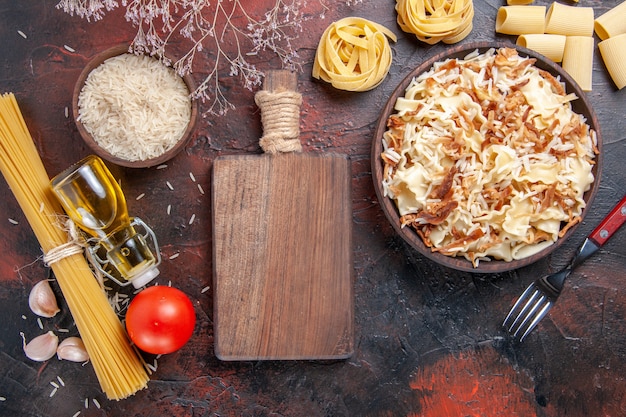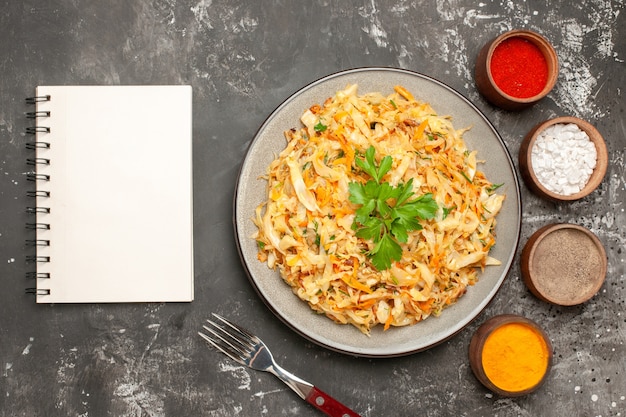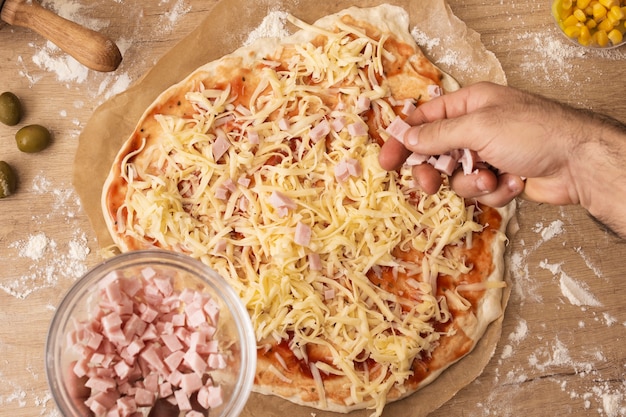The Age-Old Question: To Pre-Cook or Not to Pre-Cook?

Before we delve into the details of each method, let's first understand why this question even arises. Lasagna, in its essence, is a layered dish. You've got your sauce, your cheese, and your noodles. The noodles are essentially the building blocks of the entire structure, and their consistency greatly affects the overall texture and enjoyment of the dish.
If you're a seasoned lasagna maker, you've probably encountered those dreaded soggy noodles. Nobody wants to bite into a mushy, overcooked noodle, right? That's where the pre-cooking debate comes in. It's about striking a balance between ensuring the noodles are cooked through and preventing them from becoming mushy.
(Part 2)The Case for Pre-Cooking Lasagna Noodles

Let's start with the traditional way of doing things - pre-cooking. Many people swear by this method, and it's definitely the way I learned to make lasagna growing up. Here are some of the reasons why people prefer to pre-cook their noodles:
Preventing Soggy Noodles: A Fear We All Share
One of the biggest fears when making lasagna is ending up with soggy noodles. No one wants to bite into a mushy, overcooked noodle, right? Pre-cooking helps avoid this by ensuring the noodles are already cooked through before they go into the lasagna. This means they’re less likely to absorb too much moisture from the sauce and become mushy. Think of it like this - you’re giving them a head start in the cooking process, so they’re not as vulnerable to overcooking later on.
Adding Texture and Bite: It's All About Balance
Another reason people prefer pre-cooking is for texture. When you pre-cook the noodles, they retain a bit of their al dente bite, which can make your lasagna more satisfying to eat. You get that nice contrast between the soft, cheesy layers and the slightly firm noodles. It's all about balance, you know?
Creating a More Stable Base: No One Wants a Collapsing Lasagna
Sometimes, you want your lasagna to be really sturdy, especially if you’re making a giant one to feed a crowd. Pre-cooked noodles can make your lasagna a bit more stable and less likely to crumble or fall apart when you cut into it. This is especially important if you’re planning to transport the lasagna to a potluck or picnic. No one wants to be the one carrying the lasagna that ends up in a giant, messy pile on the floor!
(Part 3)The Case Against Pre-Cooking Lasagna Noodles

Now, let’s flip the script and look at the other side of the coin - no pre-cooking. This method has gained popularity in recent years, and there are definitely some good reasons why.
Saving Time and Effort: A Time-Saving Hack for Busy Cooks
First things first, let’s talk about convenience. Skipping the pre-cooking step can save you a lot of time and effort, especially if you’re already dealing with a busy kitchen. You’re not boiling water, waiting for the noodles to cook, then draining them - it’s one less step in your lasagna-making process. And honestly, sometimes, that extra bit of time can be a real lifesaver.
Preventing Overcooking: A Potential Downside of Pre-Cooking
Remember how I mentioned the fear of soggy noodles? Well, some people argue that pre-cooking actually increases the risk of overcooking the noodles. When you layer the pre-cooked noodles in the lasagna, they’re already partially cooked, and then they get baked in the oven with all that sauce. This can lead to them getting mushy, especially if you’re not careful with the baking time. You know what I’m talking about - that dreaded lasagna noodle that just falls apart when you try to pick it up. It’s a culinary nightmare!
Creating a More Melted and Creamy Texture: A Delicious Trade-Off
Finally, some people believe that skipping the pre-cooking step can create a more melted and creamy texture in your lasagna. The uncooked noodles absorb more of the sauce and cheese during baking, creating a richer, more decadent experience. It’s all about achieving that perfect balance of flavors and textures, and some people find that no-precooking helps them achieve that.
(Part 4)My Personal Experience: A Journey of Experimentation
So, where do I stand on this pre-cooking vs. no-precooking debate? Well, I’m a firm believer in trying both methods to see which one works best for you. Over the years, I’ve experimented with both, and I’ve come to the conclusion that both methods have their own merits. Honestly, it depends on the recipe and my personal preference at the time.
For me, pre-cooking is usually the way to go. I find that it gives my lasagna a bit more structure and texture, and I’m not as worried about the noodles getting soggy. Plus, I like the extra layer of control it gives me over the cooking process. I know the noodles are already cooked, so I can focus on getting the sauce and cheese just right. But, there are times when I’m feeling lazy or I’m trying to save time. In those cases, I’ll skip the pre-cooking step, and I’ve been pleasantly surprised with the results. The noodles still cook up perfectly in the oven, and the overall texture is still nice and creamy. It really comes down to your own preferences and the specific recipe you’re using.
(Part 5)Which Method Should You Choose? A Decision-Making Guide
There’s no right or wrong answer here - it’s all about personal preference and your desired outcome. If you’re unsure about which method to choose, here’s a quick guide to help you decide:
Pre-Cook Your Noodles If:
- You’re worried about soggy noodles.
- You prefer a more firm texture.
- You’re making a large lasagna that needs to be sturdy.
- You’re using a recipe that specifically calls for pre-cooked noodles.
Skip Pre-Cooking If:
- You’re looking for a faster and easier method.
- You prefer a creamier, more melted texture.
- You’re using a recipe that specifically calls for uncooked noodles.
Tips for Pre-Cooking Lasagna Noodles: Mastering the Art of Pre-Cooking
If you decide to go the pre-cooking route, here are a few tips to make the process smoother:
Use Plenty of Water: No Crowded Noodles!
When you’re boiling the noodles, make sure you use enough water. You want the noodles to have plenty of space to move around and cook evenly. Don’t cram them into a small pot. This will help prevent sticking and ensure they cook evenly.
Add Salt to the Water: A Key Ingredient for Even Cooking
Salt is a key ingredient in pasta cooking, not just for flavour. Adding salt to the water helps the noodles cook more evenly and prevents them from sticking together.
Don’t Overcook: Achieving the Perfect Al Dente
Be careful not to overcook the noodles. You want them to be al dente, meaning they’re cooked through but still have a little bit of bite. Overcooked noodles will be mushy and won’t hold their shape well in the lasagna.
Drain Well: Preventing Soggy Noodles in Your Lasagna
After you’ve cooked the noodles, drain them well. This will prevent them from being too soggy and ensure they’re ready to be layered into your lasagna.
(Part 7)Tips for No-Precooking Lasagna Noodles: Navigating the No-Cook Approach
If you’re going the no-precooking route, here are a few things to keep in mind:
Choose the Right Recipe: Not All lasagna recipes are Equal
Not all lasagna recipes are created equal. Some recipes specifically call for pre-cooked noodles, while others are designed for uncooked noodles. Make sure you choose a recipe that’s suitable for no-precooking. Some recipes even use “no-boil” noodles, which are specifically made to be used directly in the oven. These are a great option for a quick and easy lasagna.
Use a Thick Sauce: The Key to Even Cooking
When you’re using uncooked noodles, you want to make sure you have a thick, flavorful sauce. This will help the noodles cook evenly and prevent them from becoming too soggy. If your sauce is too thin, you can thicken it by simmering it for a bit longer or adding a cornstarch slurry. That’s a mix of cornstarch and water, and it’s a lifesaver when you need to thicken a sauce quickly.
Don’t Overfill the Pan: A Balanced Approach to Layering
When you’re layering your lasagna, don’t overfill the pan. This will help ensure that the noodles cook evenly and prevent them from getting too soggy. Remember, you’re not just making lasagna, you’re creating a masterpiece here!
Bake at a Low Temperature: Gentle Baking for Perfect Noodles
Baking your lasagna at a low temperature will help the noodles cook gently and evenly without overcooking them. If you bake at too high a temperature, the noodles might burn before they have a chance to cook through. This is a classic case of rushing the process and ending up with something less than perfect. Patience is key when it comes to baking, especially when it comes to lasagna. Remember, it’s all about slow and steady.
(Part 8)No-Precooking: The Verdict
So, is no-precooking a valid option? Absolutely! It can be a great way to save time and effort, and it can actually result in a really delicious lasagna. But, it’s important to remember that it does require a little more attention and care. You need to choose the right recipe, use a thick sauce, and bake at a lower temperature to ensure the noodles cook properly. Just remember, this is not a lazy person’s approach to lasagna. You gotta be mindful of the baking process and keep a close eye on your masterpiece.
(Part 9)The Science Behind Lasagna Noodles: A Deeper Dive
Let's talk a bit about the science behind lasagna noodles. You see, lasagna noodles are typically made from durum wheat semolina. This gives them a sturdy texture that can withstand the heat and moisture of the oven. But, these noodles are also designed to absorb moisture, which is why pre-cooking is sometimes recommended.
When you pre-cook lasagna noodles, you're essentially starting the cooking process and allowing them to absorb some of the moisture before they go into the lasagna. This can help prevent them from becoming too soggy. However, if you don't pre-cook them, the noodles will absorb moisture from the sauce and cheese during baking. This can create a creamier, more decadent texture, but it can also make the noodles more prone to becoming soggy.
Ultimately, the choice of whether to pre-cook or not comes down to your personal preference and the specific recipe you're using. There's no right or wrong answer - it's all about finding the method that works best for you.
(Part 10)FAQs: Answers to Your Burning Questions
What happens if I don’t pre-cook my lasagna noodles?
If you don’t pre-cook your lasagna noodles, they will cook in the oven with the rest of the ingredients. However, it’s important to choose a recipe that’s designed for uncooked noodles and to follow the instructions carefully. You might also want to use a thicker sauce to prevent the noodles from becoming too soggy.
Can I use no-boil lasagna noodles?
Yes, you can use no-boil lasagna noodles. These are specifically designed to be used directly in the oven without pre-cooking. They’re a great option for a quick and easy lasagna. Just make sure you follow the instructions on the package.
Should I pre-cook lasagna noodles if I’m using a white sauce?
Pre-cooking your noodles for a white sauce lasagna can help to prevent them from getting soggy. This is because white sauces tend to be thinner than red sauces. However, you can also use uncooked noodles if you’re careful and use a thick white sauce.
Is it better to pre-cook lasagna noodles for a meat sauce?
You can pre-cook lasagna noodles for a meat sauce, but it’s not strictly necessary. Meat sauces tend to be thicker than white sauces, so there’s less risk of the noodles becoming soggy. If you’re using a thick meat sauce, you can probably skip the pre-cooking step.
Is there a way to make lasagna noodles less soggy?
There are a few ways to prevent lasagna noodles from becoming soggy:
- Pre-cook the noodles.
- Use a thick sauce.
- Don’t overfill the lasagna pan.
- Bake at a low temperature.
- Don’t overbake the lasagna.
Beyond the Basics: Expanding Your Lasagna Horizons
Now that we've covered the basics of pre-cooking vs. no-precooking, let's explore some additional considerations. Here are some other aspects to keep in mind when making lasagna:
Choosing the Right Noodles: A World of Options
While traditional lasagna noodles are usually flat and wide, there's a whole world of other pasta shapes you can use. You can experiment with different shapes like shells, tubes, or even rolled pasta sheets. This can add a unique twist to your lasagna, both in terms of texture and appearance.
Varying the Fillings: A Feast for the Senses
Lasagna isn't just about meat and cheese. You can get creative with your fillings. Some popular variations include spinach and ricotta, vegetables, or even seafood. The possibilities are endless! Just remember to adjust your cooking time and temperature accordingly based on your chosen ingredients.
Adding a Touch of Flavor: Elevate Your Lasagna
Don't be afraid to add your own personal touch to your lasagna. You can experiment with different herbs, spices, and even a touch of citrus zest to create a unique flavor profile. Remember, lasagna is a blank canvas for your culinary creativity!
(Part 12)The Bottom Line: It’s Up to You!
So, there you have it - a complete breakdown of the pre-cooking vs. no-precooking debate for lasagna noodles. Ultimately, it’s up to you to decide what works best for your cooking style and taste preferences. There’s no right or wrong answer - it’s about finding what makes your lasagna absolutely perfect. Remember, it’s your kitchen, your lasagna, and your journey to culinary excellence. Get out there, experiment, and enjoy the process!
Everyone is watching

How to Cook Frozen Lobster Tails Perfectly: A Step-by-Step Guide
RecipesLobster. Just the word conjures up images of lavish meals, special occasions, and a taste of luxury. But let's...

Pigs in a Blanket Cooking Time: How Long to Bake for Perfect Results
RecipesAh, pigs in a blanket. Just the name conjures up images of those delightful little parcels of crispy pastry en...

Pork Fillet Cooking Time: How Long to Cook It Perfectly
RecipesPork fillet, or tenderloin as it's sometimes called, is a real favourite in our house. It's so versatile, and...

The Ultimate Guide to Cooking Delicious Frankfurters
RecipesLet's face it, we all love a good frankfurter. It's a classic, simple, and always satisfying. But let's be rea...

Wolf Meat Recipes: A Guide to Cooking Wild Game
RecipesLet's be honest, you don't see wolf meat at your local butcher shop every day. It's a bit of a wild card, but ...
